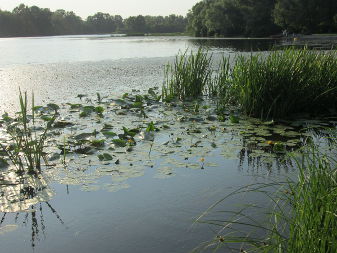
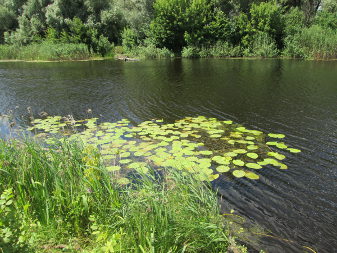
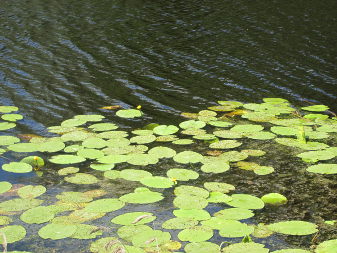
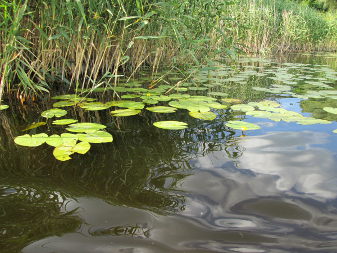

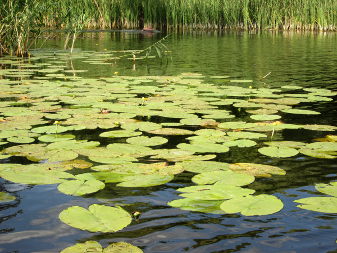

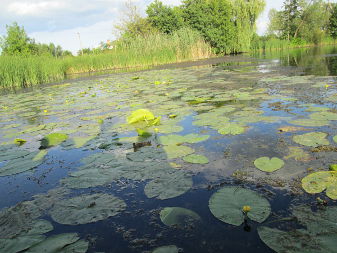
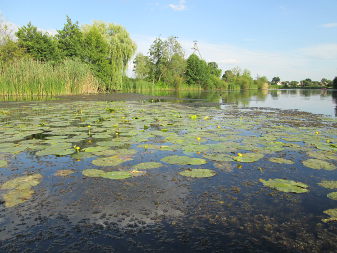
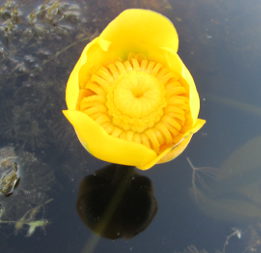
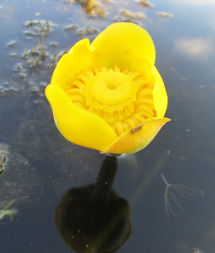
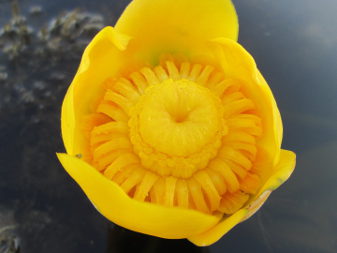
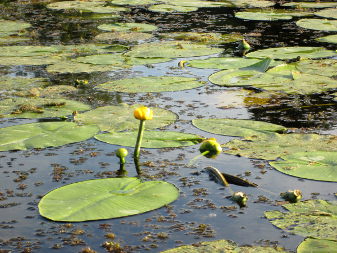
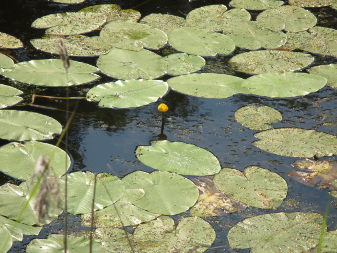
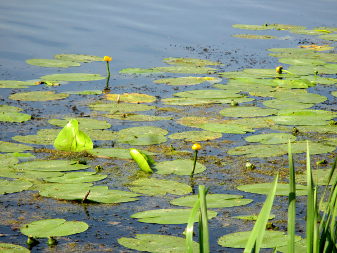
Yellow Water-lily (Nuphar lutea), fam. Nymphaeaceae.
In the lakes that stretch in a chain along the Darnytsia river, yellow water-lily has never been found. Probably, it does not like weak current, which even stops completely for summer months. However, yellow water-lily is quite abundant in larger water bodies of Northern and Central Ukraine. Apparently, the closest place to DVRZ in Kyiv where the yellow water-lilies can be seen is Rusanivs'ka Naberezhna and Canal. The area of this plant includes most part of the temperate zone in Eurasia.
This is a perennial water plant. Its leaves are divided into underwater (tender and thin) and floating (strong, able to withstand river waves and changes in water level). Floating leaves and stems contain aerenchyma (air-bearing spongy tissue), which in addition facilitates gas exchange at photosynthesis and breathing.
The things that look like water-lily petals are actually its yellow sepals; usually there are five of them in a flower. They protect the inside of the flower from water splashes, closing with bad weather and in the night. The true 13-15 petals (short and degenerate) form a circle inside.
Some people say that Water-lilies spread and contaminate the water bodies. It is wrong – they rather clean our lakes and rivers! This plant does not allow the cyanobacteria to propagate, so it prevents the algal water bloom. It also suppresses many Protozoa – amoebae and infusoria. So, the water is actually much cleaner and safer in the places where water-lilies grow, than elsewhere.
Yellow and White Water-lilies and Lotus are a separate branch of the flowering plants, originating from ancient ancestors (Magnolias). They had separated even before the Monocots and Dicots classes have formed, so the systematicists are not unite – whether to put this group of water plants into one of these classes, or to consider them separately.
The chemical composition of Water-lilies is also unique – a wide spectrum of alkaloids has practically no analogy in the plant world. This determines the toxic properties of the plant, including those for humans. However, for pathogenic and parasitic organisms – bacteria, fungi, protozoa (trichomonads, giardias), pathological (cancer) cells, and for some insects (cockroaches) its toxicity is much higher. This allows to use water-lilies against various diseases in moderate dosage. They also have contraceptive effect.
It is very difficult to gather the water-lily rhizomes, to be used in medicine. The plant is gathered from the water, and heavy efforts are needed to pull out the rhizomes keeping firmly in the ground. Moreover, from 10 kg of fresh peeled and washed rhizomes only 1 kg of dry product is left after drying.
The water-lily rhizomes, rich in starch, can be consumed as food. Their toxicity needs to be neutralized through a special recipe. The peeled rhizomes are ground in meat grinder (or powdered in flour after drying), then they are poured into excess of water at least three times for several hours, with further decanting. Finally, they are cooked for long time. Even after all these actions, the antiparasitic and toxic properties can persist in some part.